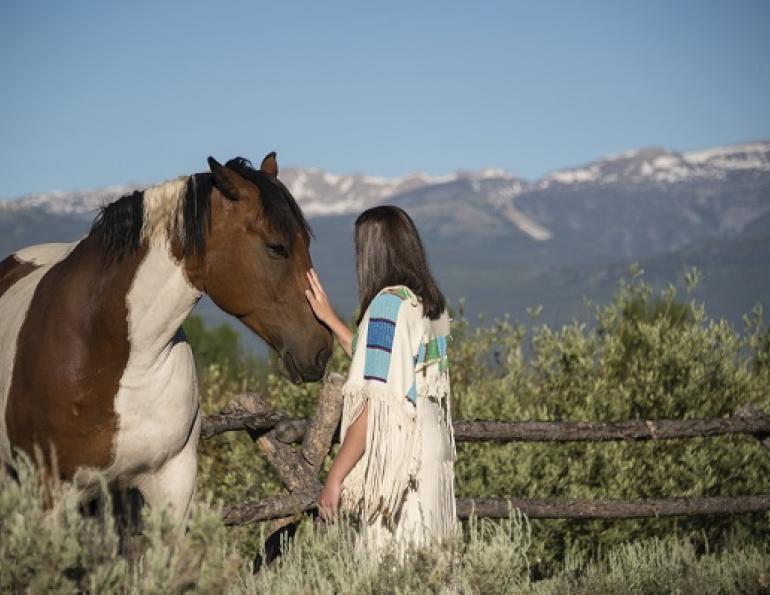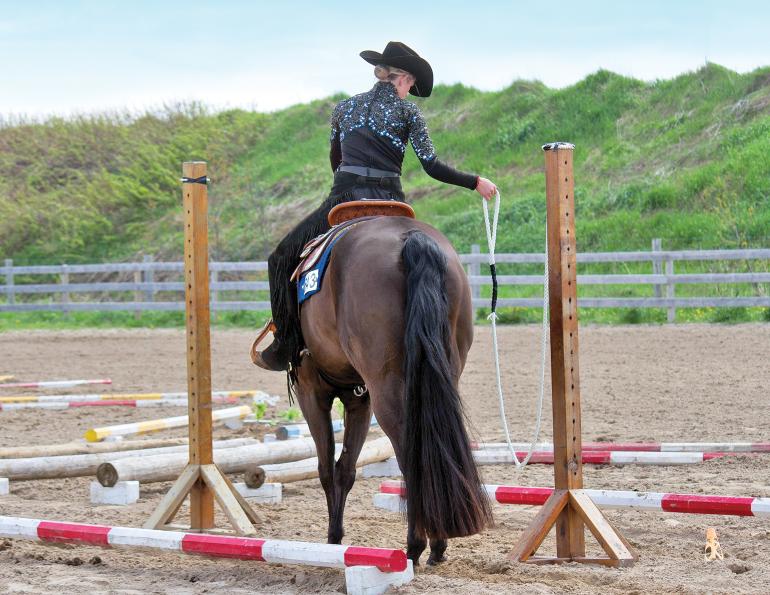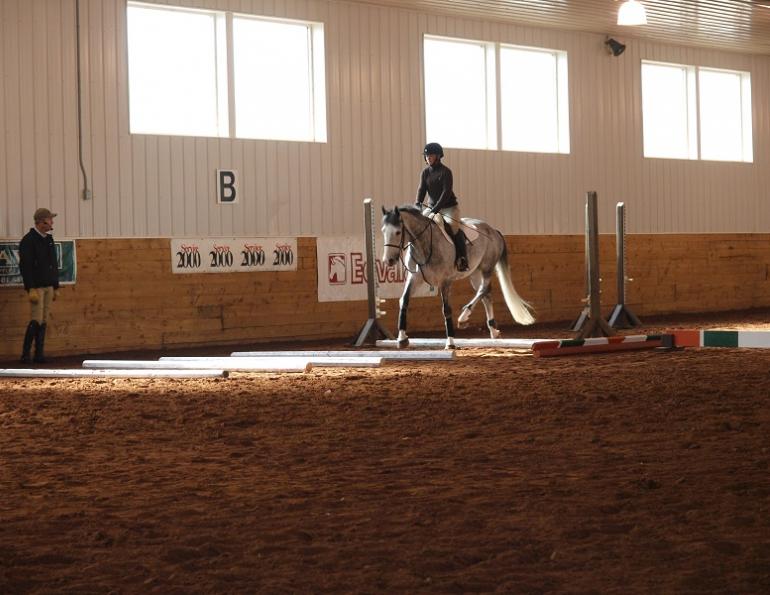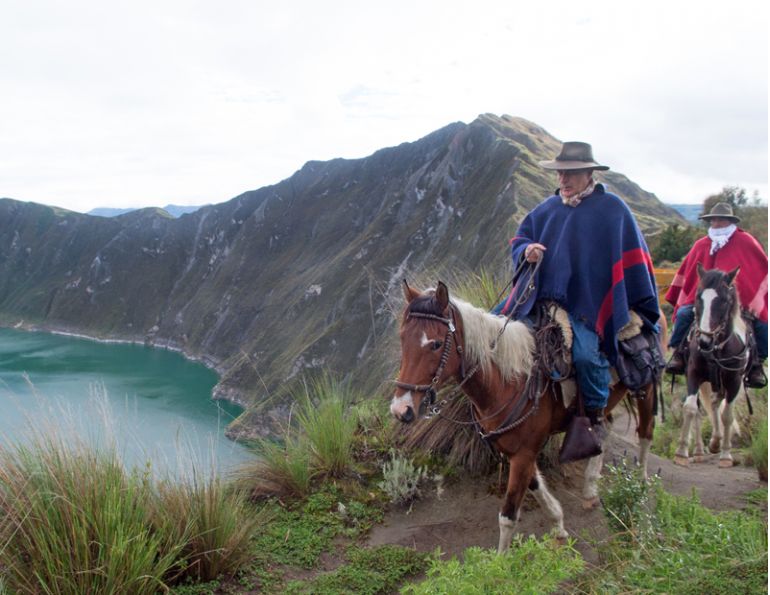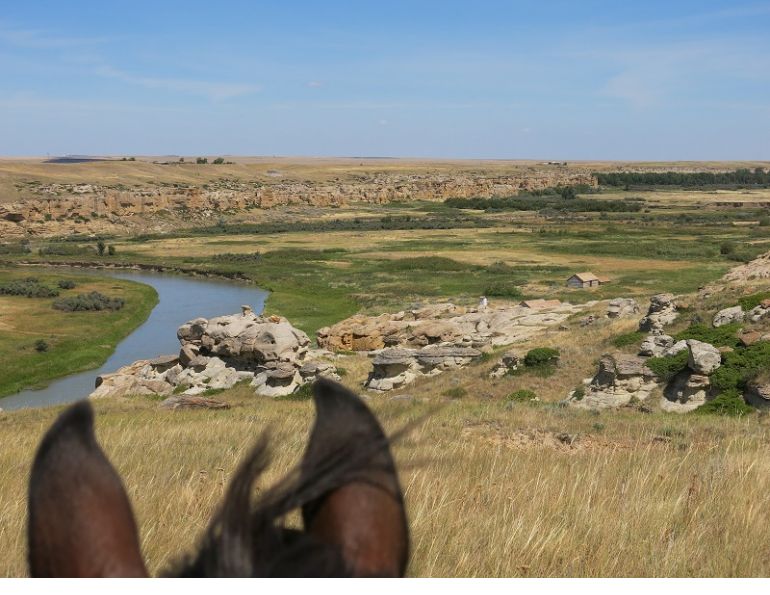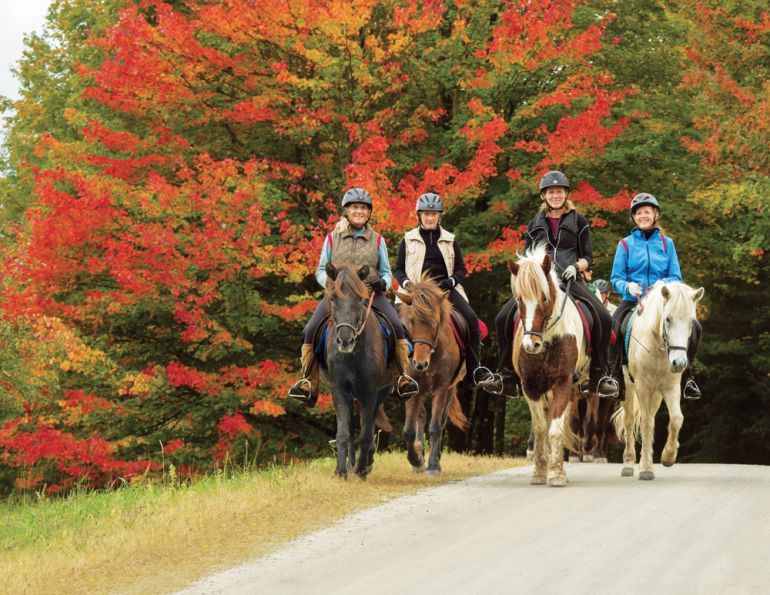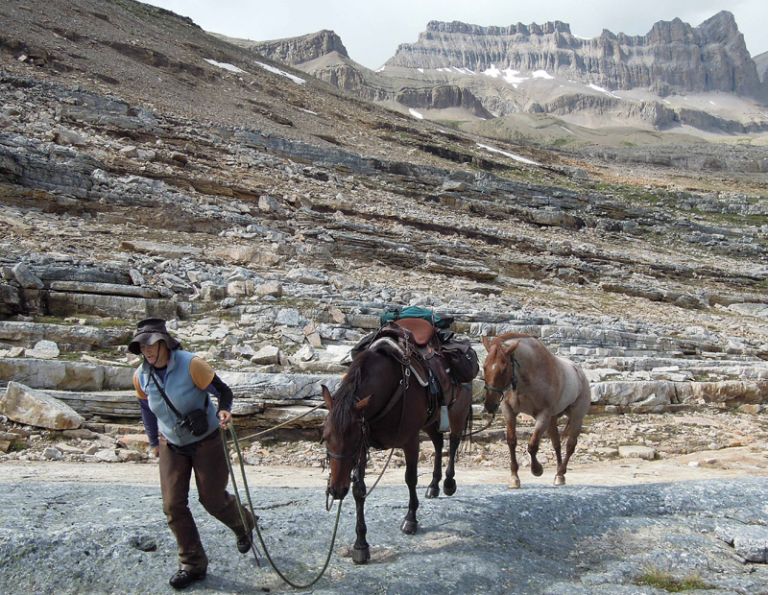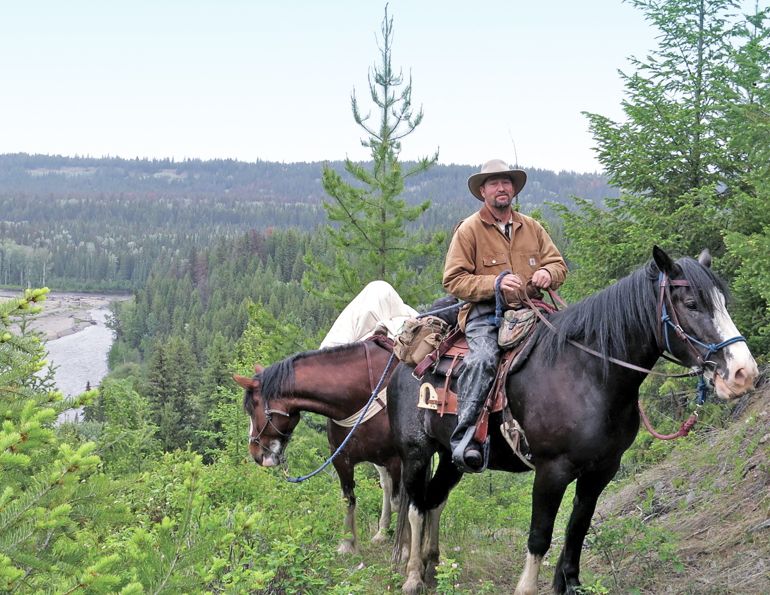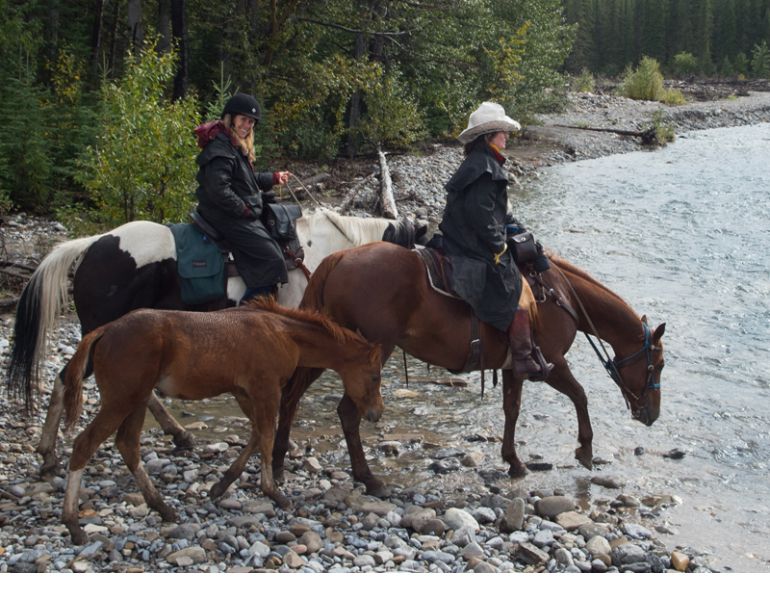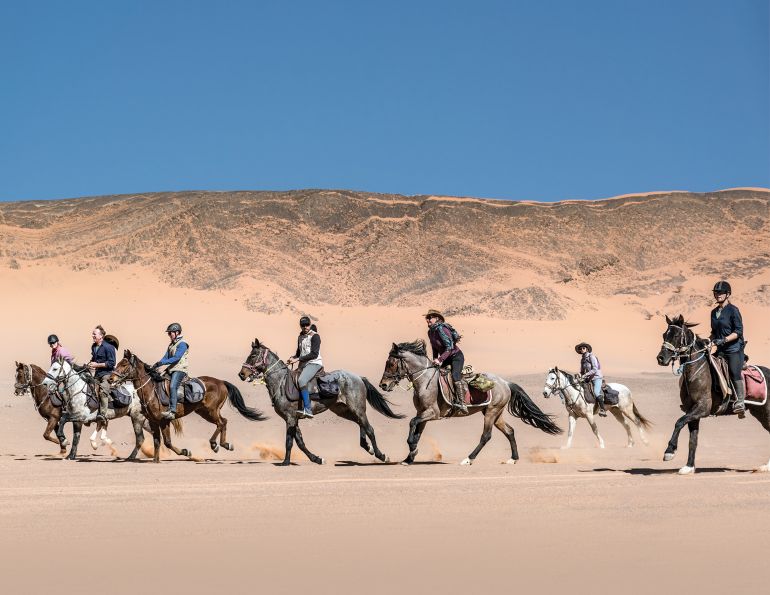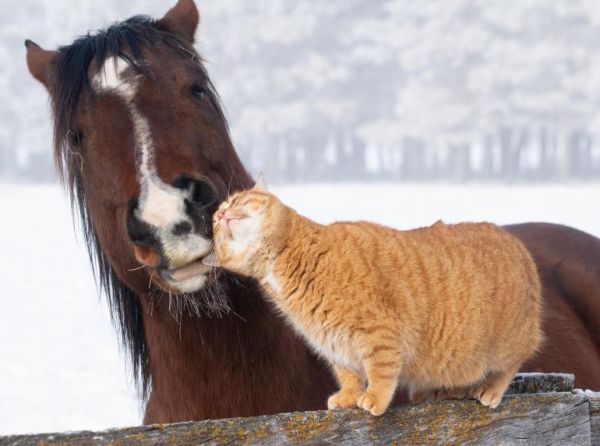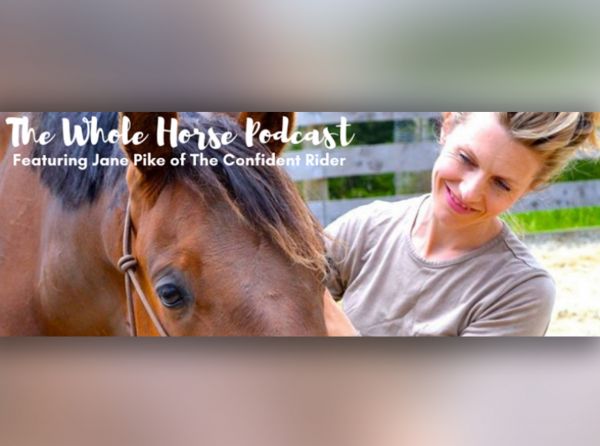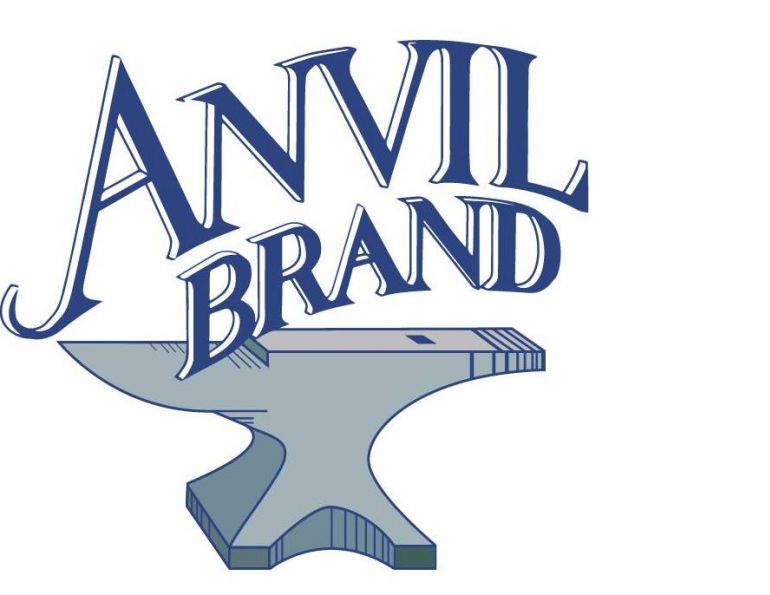A Lesson in Building Trust
By Dr. Daryl Drew
The winter of 2007 brought unseasonal weather to Central Saanich on Vancouver Island, British Columbia, where the ratio of flowerboxes to snow ploughs is at least 10,000 to one. After nearly three weeks of snow, cold temperatures, and isolated flurries, I heard laments from many riders for the return of the West coast’s most discernable characteristic: rain. “At least you can ride in the rain,” I was told over and over again. The rest of Canada would collectively laugh at us for complaining about a few weeks of winter, but the fact is we on the southern portion of Vancouver Island do not have the mindset for coping well with the enclosure that snow brings to our riding.
I noticed two occurrences as wind-blown snow swirled through any open barn door where I might have been feeding, bucketing warm water, or breaking ice from frozen water taps. Firstly, we were impatient to see spring and, secondly, people were spending more time than usual just simply hanging around their horses — with discernible benefits. That reminded me about an important aspect of horse-human relationships, which was reinforced the following summer when I participated on a horse pack trip in BC’s Rainbow Mountains.
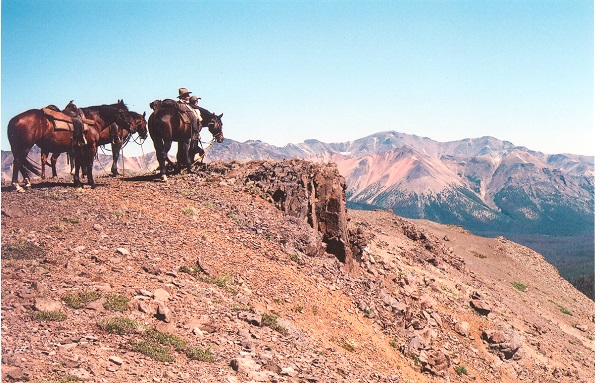
Photo (above): A pack trip in BC’s Rainbow Mountains helped reconnect Capoose to her childhood with horses and the valuable lessons she learned about horse-human trust. Photo credit: Daryl Drew
A First Nations teacher and horsewoman, Bella Capoose, had expressed the desire to go to the mountains again by horseback as she had done as a young girl. Bella’s friends, outfitters Dave and Joyce Dorsey, made the trip into the Mackenzie Valley of Tweedsmuir Park possible so that Bella could rekindle the memories of family and friends and a way of life that had depended heavily upon horses.
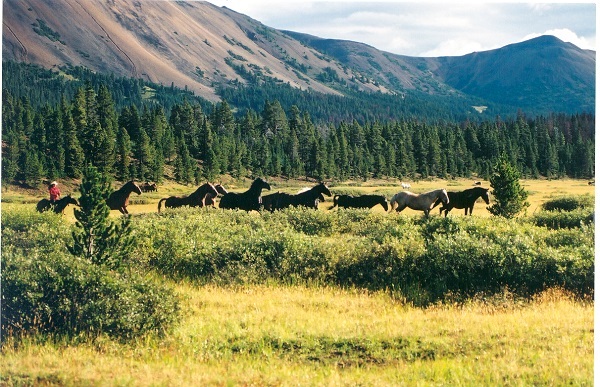
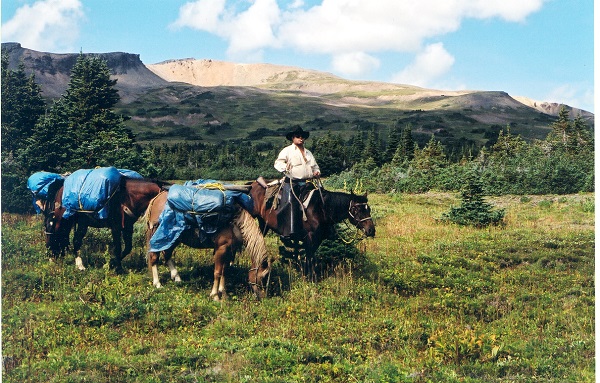
Photos (above): The pack trip into the Mackenzie Valley of BC’s Tweedsmuir Park was led by outfitters Dave and Joyce Dorsey. Photo credit: Daryl Drew
On one particular day, we were camped at Tanya Lakes when two young fishermen from Anahim Lake rode into their camp with two salmon hanging from each of their saddles. I watched the fishermen dismount, unload their catch, and let their horses loose to graze around the tents. Looking up from the campfire, Bella saw me watching the two riders with interest and said, “We used to spend more time living with our horses. They were just a part of our camps, a part of our daily living.” I listened with interest because Bella had spent the majority of her life with horses.
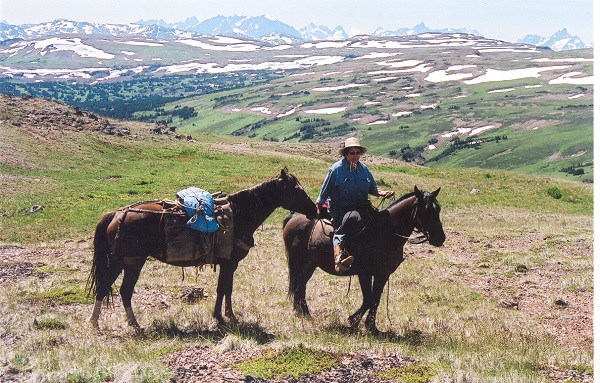
Photo (above): Bella Capoose, a First Nations teacher and horsewoman, recalls her childhood when people spent more time simply living with horses. Photo credit: Daryl Drew
As a little girl in the 1940s, she had followed her dad into the Rainbow Mountains in the West Chilcotin to hunt for caribou. Her maternal grandfather, Domas Squinas, had been a world-renowned hunting guide and horse packer. Her paternal grandfather, Antoine Capoose, had ranched and kept a large herd of 200 horses because he also had a small store. Antoine would lead long pack strings of horses to Bella Coola on the Precipice Trail with furs he had traded with trappers and pick up supplies to sell to ranchers. Josephine Capoose and Louis Squinas took over from him. Bella also remembered month long cattle drives to Williams Lake, all done from horseback. Ranch life was challenging, but it must have agreed with Louis, for he lived to be 100 years old, passing away in 1988.

Photo (above): Bella Capoose (right) and friends. Photo credit: Daryl Drew
Life in the bush made you savvy around horses because it had its risks. Bella recalled a runaway on an old horse-drawn hay rake, getting tangled in the reins, and being flipped off the rake and dragged by the tines. “I was lucky that time,” she said, fatalistically shaking her head. “We were a long way from the nearest hospital.” Despite those harsh realities, Bella had begun to look off into the mountains and thought about revisiting the places that connected to the memories of her childhood.
What Bella had said about living with horses reminded me of a lesson from a First Nations horse trainer named GaWanNi Pony Boy. He teaches that one of the key concepts for working with a horse is building a relationship of trust. What I have learned from teaching kids for 34 years and training a large number of horses, some range-raised and some hand-raised, is that trust takes time. It only develops when you as the teacher and trainer are seen as part of the horse’s solution to problems rather than the cause of a problem. Most of a horse’s perceived problems are centered in fear; fear is centered in the moment or brought forward from the past as a trigger for behaviour in the present. Familiarity via positive experiences tends to reduce fear in the moment and only positive reinforcement over time can override memory. Those horses that were let loose in camp showed no fear of anything human; instead, they appeared quite familiar with their surroundings. As Ponyboy points out, spending time just hanging around with horses in their familiar surroundings goes a long way to making the human less threatening to the horse.
To this end he suggests that people just take some time to passively observe their horse from within the horse’s environment. He notes that there are many books that tell what your horse is as an animal, but nothing to tell you who your horse is as an individual. To develop any positive relationship, it’s important to know the nature of the individual horse in the potential relationship. That is exactly what horses do in the first few moments of horse-human contact. They try to discern who you are and at the same time discover your intentions. If they receive mixed messages they will either act through a sense of fear or a sense of curiosity, both governed by their own perceived best self-interest. After all, what horses know best is that they are both prey animals and herd orientated. It is by working with these two perceptions that we are able to build our relationships — a herd of two, if you will.
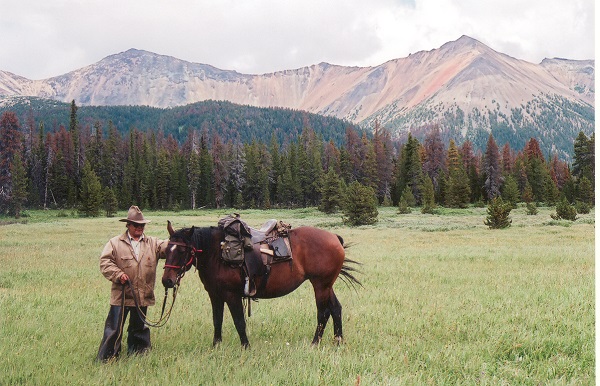
Photo (above): There are many books that will tell you who your horse is as an animal, but none will tell you who your horse is as an individual. Photo credit: Daryl Drew
Since we learn most about horses from horses, as an exercise Ponyboy suggests that horse owners take what time they can to observe the everyday behaviour of their horse, concentrating on the process more than aiming for a specific outcome. You might learn, for example, how your horse responds to other horses, its perceived position in a herd, what it prefers to eat, how many times it rests, and when or how it reacts to a car going by. These factors may not be important singularly, but together they are part of a complex pattern showing who your horse is as an individual and after all, it is the individual that we attempt to teach.
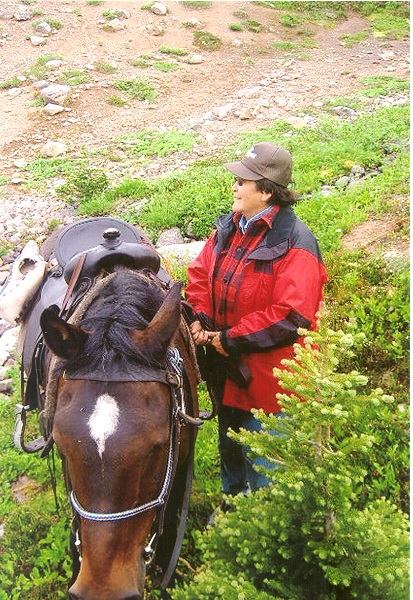
Photo (above): Trust is an integral part of building a strong horse-human relationship. Photo credit: Daryl Drew
In our rushed world today when many owners have little time to spend with their horses other than to ride for an hour or so and then return them to their stalls or paddocks, a trusting relationship is sometimes hard to develop. But I believe, as Bella indicated and Ponyboy has stated as well, trust is an essential part of building a compatible and sustainable working horse-human relationship. I have observed over the years that this important point sometimes gets forgotten, to the detriment of both horse and human. I have also observed that sometimes it is a good thing to have a little winter, now and again, so that there is more time for horses and their humans to get to know one another.
Check out more Holidays on Horseback.
Main article photo: Simply spending time observing your horse in his natural environment can tell you a lot about who he is as an individual. Photo credit: ©iStockphoto/ITeachPhoto



